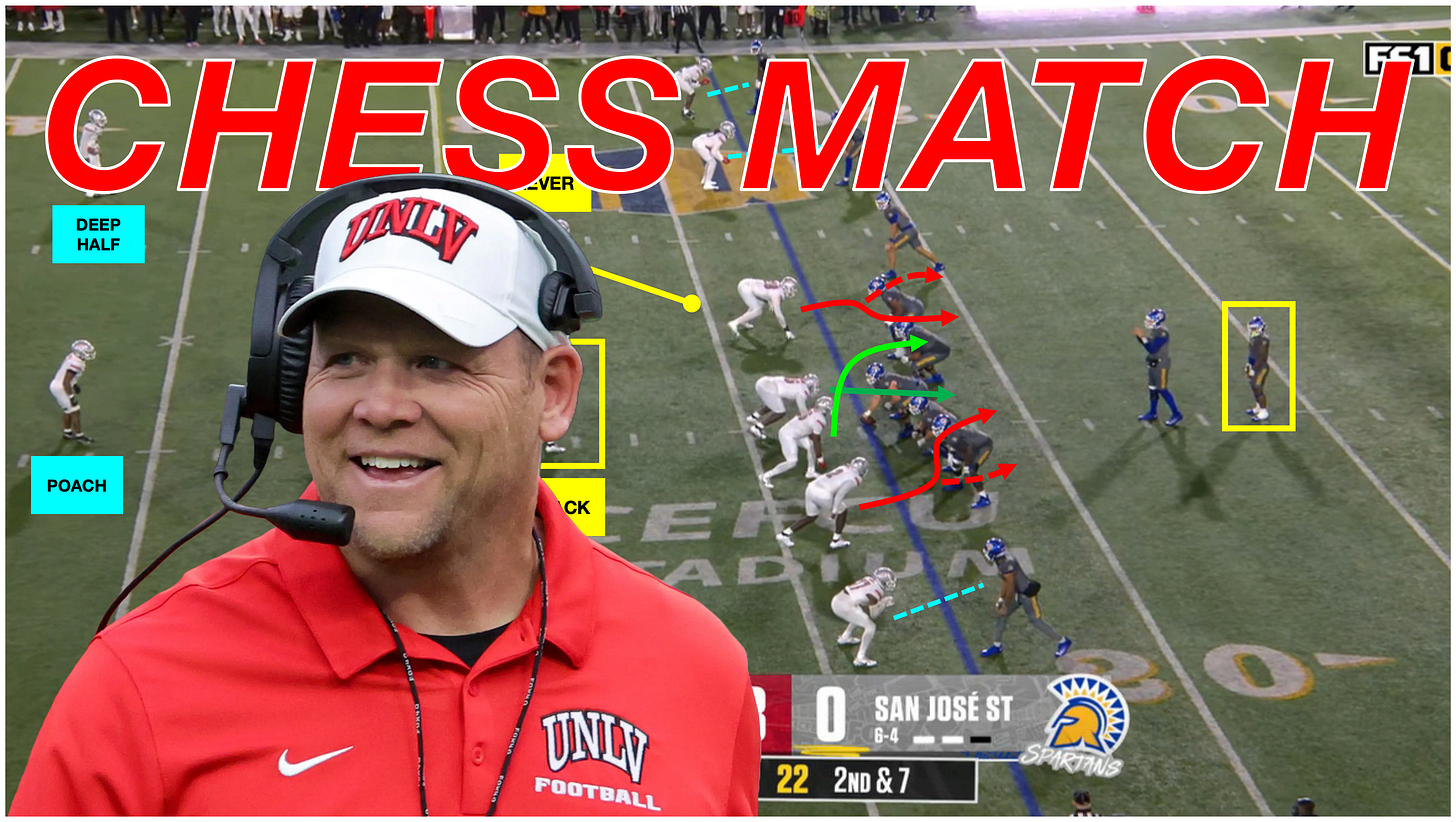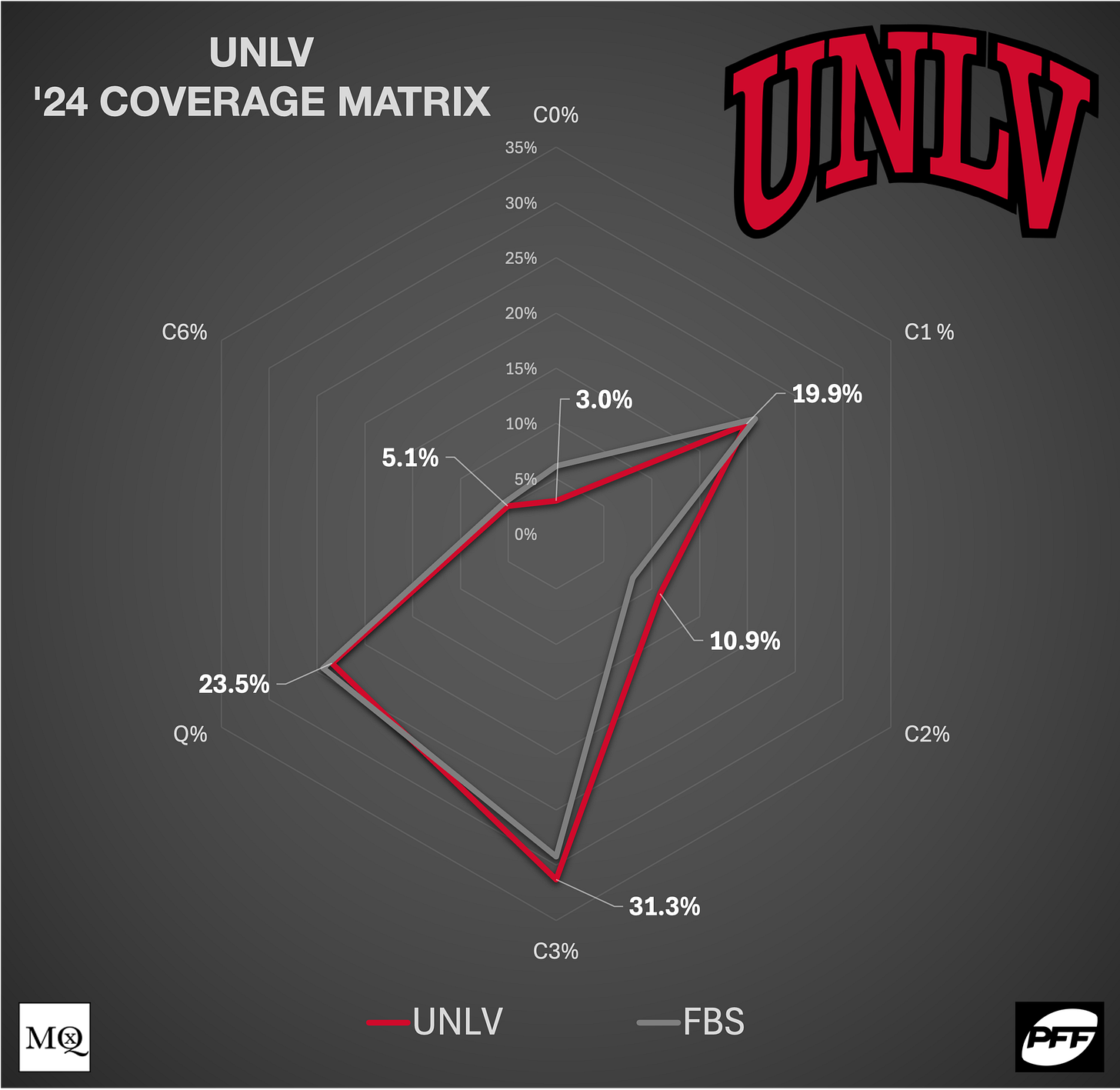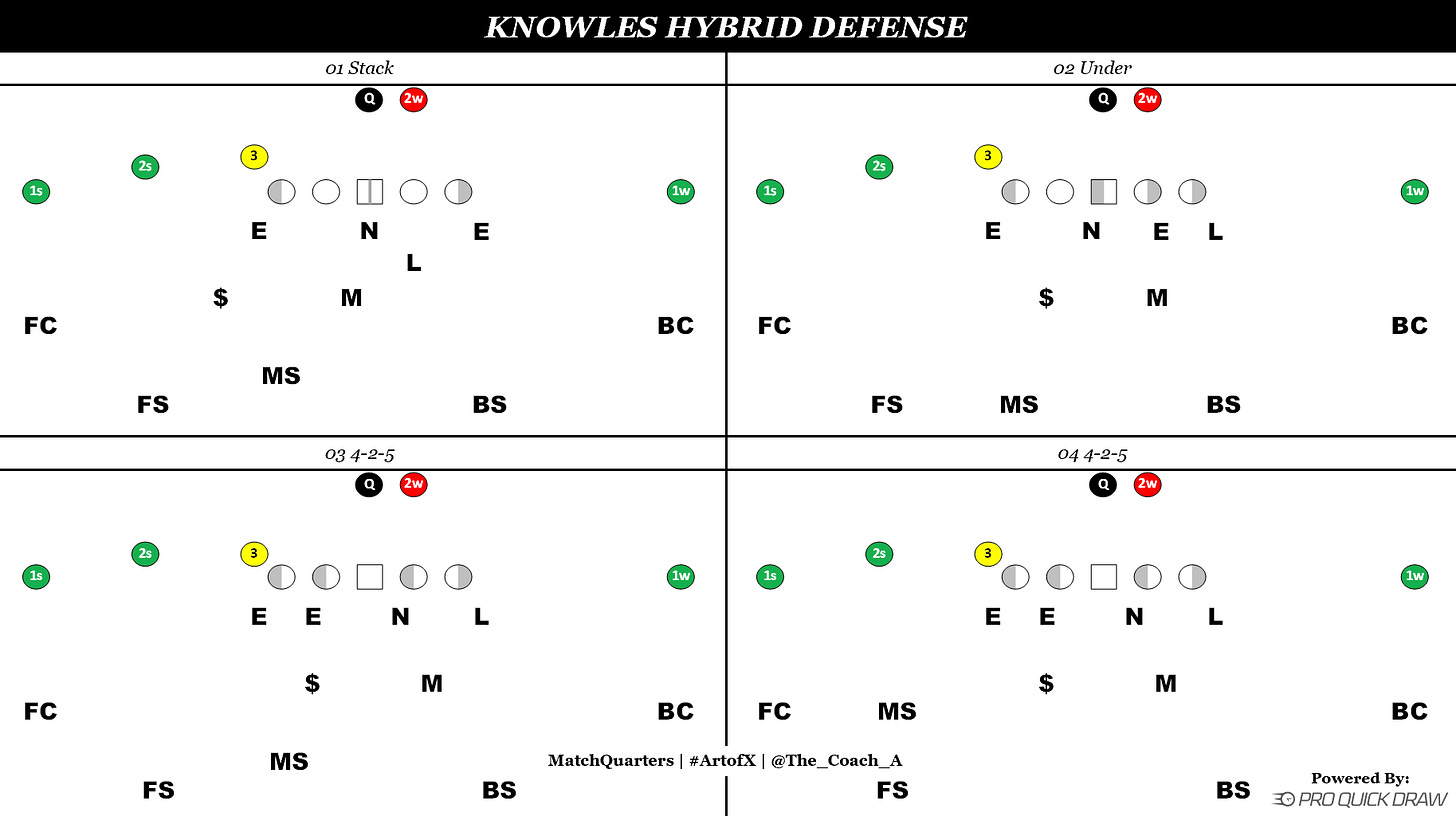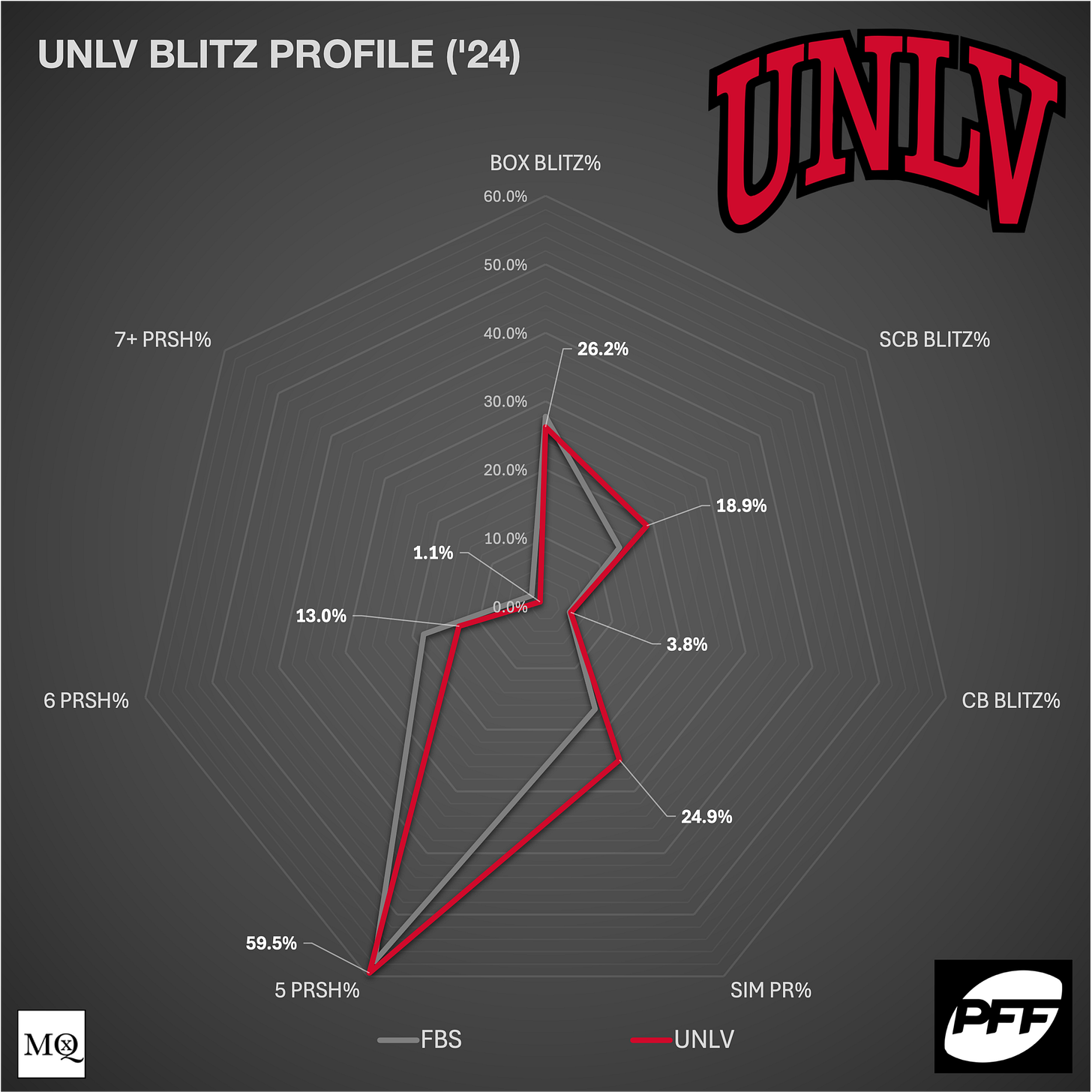Chess Match: UNLV's Odd Stack Defense vs. San Jose State's Primary Four-Open Offense
One of the best hybrid Odd Stack defensive coaches is newly appointed Purdue Head Coach Barry Odom. Against SJSU he employed a hybrid four-down front to counter the Spartans' Spread run game.
UNLV has never had a storied football history. The school didn’t start football until 1968 and wasn’t a full-fledged member of the FBS until a decade later. The Rebels won nine games in ‘79 as an independent but wouldn’t see a double-digit win total until 1984 under Harvy Hyde. That team won 11 games, but later, the NCAA vacated all wins after playing ineligible players.
UNLV suffered through FBS purgatory after the NCAA sanctions. Under Hyde, the Rebels had their first back-to-back winning seasons since becoming an FBS program. The football team attended just three bowl games from 1985 to 2022, and there were few high water marks. Before Barry Odom’s hire in 2023, the best season since the 11-win 1984 team was the 2000 Las Vegas Bowl championship team that went 8-5.
Odom was hired as the UNLV head coach after three relatively successful seasons at Arkansas, during which his 2021 defense ranked in the top 25. Before Arkansas, Odom had been the head coach at Missouri, his alma mater. When his former coach, Gary Pinkle, retired after the 2015 campaign, Odom took over for him.
Though not successful and eventually fired at Mizzou, where he earned a .500 record in four years, Odom was seen as an excellent defensive coach. Sam Pittman hired him to run the defense in Arkansas. At Mizzou, Odom had been a primary four-down front defensive coach but would transition to a hybrid three-high system in Fayetteville.
At his first Mountian West press conference in ‘23, Odom was clear about the fluidity of his defense: “[W]hat are we going to look like schematically? Are we able to run a 4-2-5? Are we a true 4-3 team? Are we an odd-front stack? What does that look like?” The same comments were at his early Arkansas press conferences, too. One word that typically is just coach speak but rings true for Odom is ‘multiple.’ Week to week, Odom found a way to manipulate his defensive personnel to counter the specific offense at hand.
Odom would bring the same three-high structure in Las Vegas, but he could easily change that depending on need and talent availability. Like so many hybrid schemes, the Rebels’ defense is multiple. There are different front structures to match offensive diversity and personnel. Odom’s coverage selection reflects the national average in almost every category (above).
Most three-down defenses are ‘pressure-heavy,’ with many coaches adding their hybrid players to the box. Pressure is relative; in many cases, teams are looking to add a fourth rusher in three-high defenses, which is why the simulated pressure numbers are high (Creepers and off-ball sims). Like other Odd Stack teams, Odom found ways to bounce from a 4-2-5, 3-4, and classic 3-3-5 alignments.
The trend to be multiple upfront from Odd Stack defenses is nothing new. Jim Knowles and his ‘Leo’ structures are probably the most widely known. Though Iowa State is the ‘king’ of the three-high defenses, they typically try to keep their Odd structure at the line of scrimmage. On the other hand, Knowles has used a Leo-backer (Jack) and moved him around to create different alignments (above).
Most Odd Stacks have a way to get into even spacing structures. Knowles and others use a hybrid Edge and move him around to work different angles and pressures against an offense. This concept can confuse offenses, which must account for a different look each down while the defense can play fast.
Odom utilized multiple looks against several teams. Against Kansas, the Rebels ran everything from traditional Over and Under fronts to 5-1 Bear alignments. Against Oregon State’s primary 12 personnel offense, UNLV stayed in a 4-2-5 look for much of the game. Lastly, against Boise, the Rebs appeared to be mainly a 3-4 base defense.
Regarding pressure, UNLV used mainly five-man pressures, with over a quarter of their calls coming as sim pressures or four-man rush ‘blitzes.’ Almost 60% of the pressures were caused by the two primary off-ball linebackers. ‘Pressure’ many times in hybrid structures could be as simple as placing the Leo in an interior gap and rushing him. Technically, these are pressures, but oftentimes, the coach refers to them as structural adjustments.
Keep reading with a 7-day free trial
Subscribe to MatchQuarters by Cody Alexander to keep reading this post and get 7 days of free access to the full post archives.







